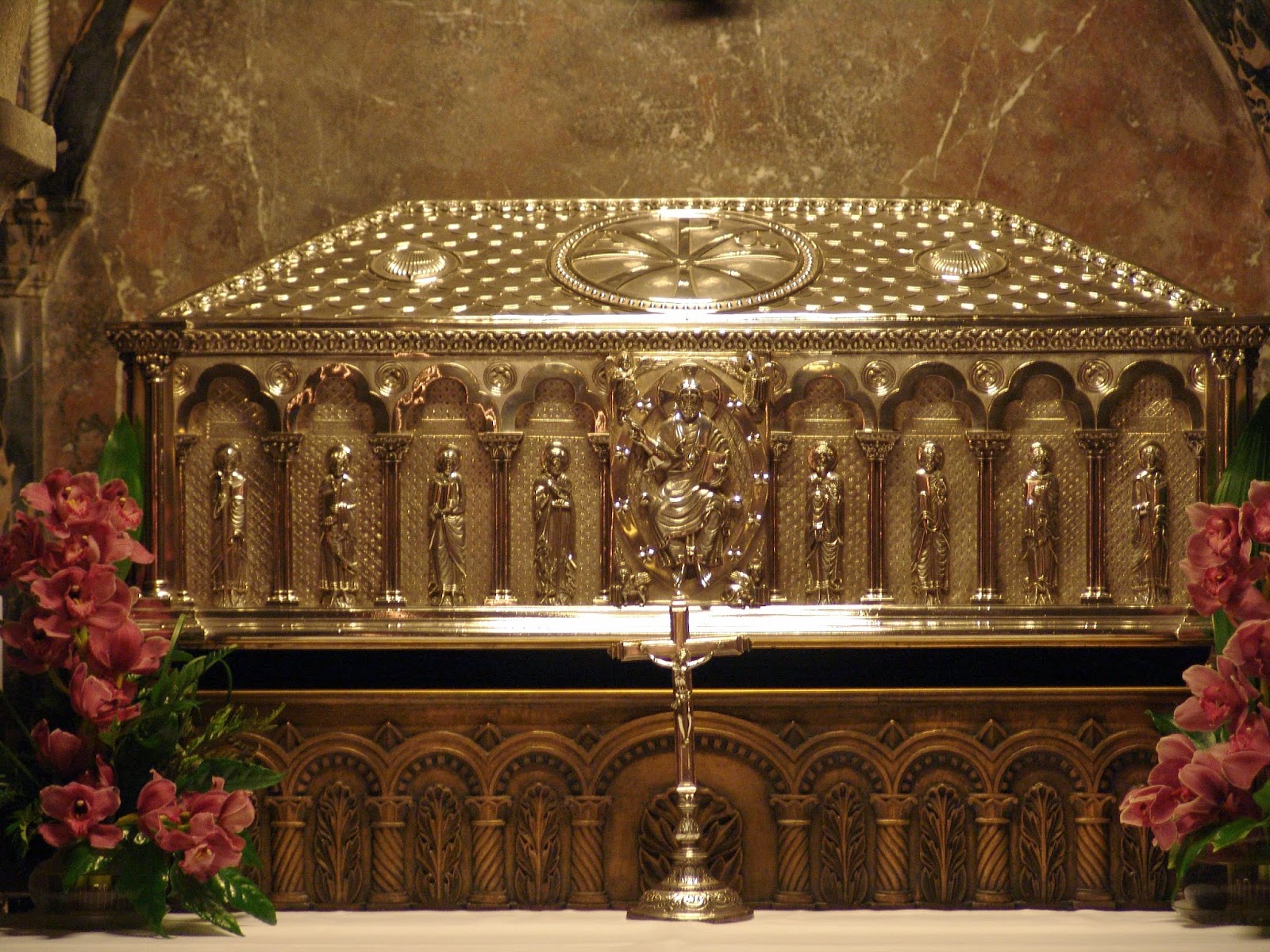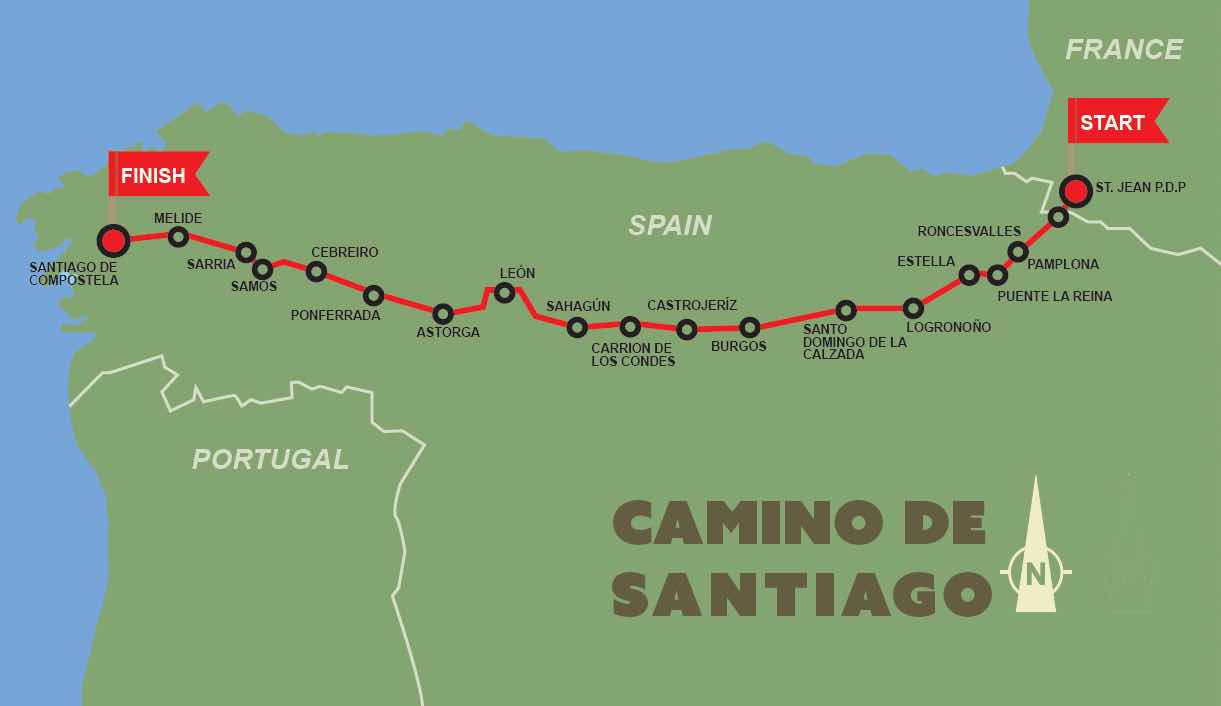
Camino de Santiago: a transformative journey to the tomb of Saint James
October 6, 2024
0

The Camino de Santiago, or the Way of Saint James, is one of the most famous pilgrimage routes in the world, leading to the city of Santiago de Compostela in Spain. This journey is not only a spiritual experience for many but also a path for self-discovery, personal reflection, and cultural immersion. The pilgrimage has deep religious roots, with the final destination being the tomb of Saint James, one of Christ’s apostles, believed to be buried in the cathedral of Santiago. Although the burial is part of religious tradition, millions of travelers from around the world embark on this journey for various reasons, both religious and secular.
The legend of Saint James' tomb

According to Christian tradition, the remains of Saint James were brought to Galicia, Spain, after his martyrdom in Jerusalem. Today, pilgrims visit his supposed resting place in the Santiago de Compostela Cathedral, which has been a major religious site for over a thousand years. Whether one believes in the legend or not, the Camino continues to inspire and attract people seeking spiritual renewal and personal growth.
The route and distance

The most popular route, Camino Francés (the French Way), stretches for approximately 800 kilometers (500 miles) across northern Spain, starting in Saint-Jean-Pied-de-Port in France. On average, this journey takes 4 to 6 weeks to complete on foot. There are other popular routes such as Camino del Norte (Northern Way) and Camino Portugués (Portuguese Way), each offering different landscapes and experiences.
Who undertakes the Camino?
Although originally a Christian pilgrimage, today the Camino is walked by people of various religious and spiritual backgrounds:
- Christians: Especially Catholics, who walk in honor of Saint James.
- Protestants and Orthodox Christians: Many seek a deeper spiritual experience and connect with their faith along the way.
- People of other faiths or beliefs: Including Buddhists, Hindus, and secular travelers, who undertake the Camino as a personal journey of reflection or for the physical challenge.
- Non-religious participants: Many walk the Camino for personal growth, a break from modern life, or to connect with nature.
How do pilgrims travel?
Pilgrims on the Camino can travel alone, in small groups, or join up with others along the way. Often, groups form spontaneously on the route, fostering a strong sense of community and support.
Where to find Camino partners:
- Forum Camino de Santiago: caminodesantiago.me/community/
- Another excellent resource is this forum, where pilgrims from around the world share tips and find companions for their pilgrimage. You can explore and participate in discussions here: American Pilgrims on the Camino and El Camino con Correos
- Facebook Groups: American Pilgrims on the Camino Facebook Group
Accommodation and where to stay
Along the route, you will find albergues (hostels for pilgrims) which typically charge €5 to €20 per night. These are basic but comfortable accommodations designed for those walking the Camino.
If you are in a town or village where no pilgrim hostel is available, you can search for available hotel or hostel bookings on Your Price Booking, which offers budget-friendly options. This is especially useful for travelers who want flexibility in accommodation.
Preparation and gear
- Physical preparation: The Camino isn’t technically difficult but requires good endurance. Regular training for long-distance walking will help prepare your body for the journey.
- Essential gear: A light backpack, comfortable hiking shoes, weather-appropriate clothing, and your pilgrim’s passport (Credencial del Peregrino) are crucial.
- Pilgrim’s passport: You collect stamps from the towns and cities along the route, and this document is required to stay in albergues and receive the compostela, a certificate of completion.
Cost of the journey
- Daily expenses range from €20 to €40 for those staying in albergues and eating pilgrim meals (Menú del Peregrino), which cost around €8 to €15.
- For those choosing private accommodations or dining at restaurants, the cost can be higher.
Best time to go
The best times to walk the Camino are during spring (April-June) and autumn (September-October), when the weather is milder, and the number of pilgrims is lower than in the peak summer months.
The transformative power of the Camino
Many people report that walking the Camino is a life-changing experience. Whether it’s the simplicity of walking day after day, the beauty of the landscapes, or the deep conversations shared with fellow pilgrims, the Camino offers an opportunity to reflect on life’s priorities. Many return from the pilgrimage with a renewed sense of purpose, spiritual clarity, and a stronger connection to themselves and others.
At The Wandered blog, we are passionate about transformative journeys and have explored various fascinating destinations in depth. Among our featured adventures are the iconic Everest Base Camp, thrilling safaris in Kenya and Tanzania, the mystical Machu Picchu in Peru, the breathtaking wilderness of Antarctica, the unique biodiversity of the Galapagos Islands, and the stunning tour of Patagonia’s national parks in Chile and Argentina.
